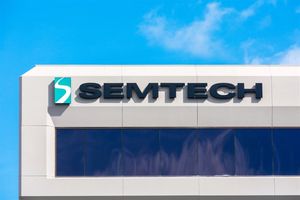With its focus on targeting well-defined subgroups by inhibiting SRC/YES1 kinases in Non Small-Cell Lung Cancer patients resistant to EGFR and ALK targeted therapies, Nuvectis Pharma’s NXP900 could hold similar transformative potential in NSCLC as Summit Therapeutics’s Ivonescimab
The Bottom Line
- Summit Therapeutics (NASDAQ: SMMT) recently reported Ivonescimab’s Phase 3 results from study conducted in China that showed significant efficacy in addressing NSCLC treatment resistance, surpassing Merck's Keytruda in key outcomes and sending SMMT stock skyrocketing.
- Like Ivonescimab, Nuvectis Pharma’s (NASDAQ: NVCT) NXP900 tackles resistance in NSCLC but targets a different pathway by inhibiting SRC/YES1 kinases, which are key drivers of cancer survival. Both drugs focus on well-defined subgroups from the outset—Ivonescimab targets patients with PD-L1 expression, while NXP900 focuses on subgroups with EGFR and ALK mutations—ensuring targeted treatment for specific patient populations. Each one of these subgroups represents a substantial addressable patient population.
- The demand for resistance-focused therapies is growing as many patients face inevitable progression, with immunotherapy, or EGFR and ALK inhibitors. This is driving the growing trend of targeted therapies like Ivonescimab, and potentially, NXP900, which may be able to overcome resistance to EGFR and ALK targeted therapies, in combination with EGFR and ALK inhibitors, respectively, thus potentially suppress cancer progression without the need for chemotherapy.
- NXP900 has also shown significant potential beyond NSCLC, including in cancers like squamous cell carcinoma, expanding its reach across multiple tumor types. Early preclinical data indicates that NXP900 could reverse resistance to existing therapies like EGFR and ALK inhibitors, giving hope to patients with limited options.
Summit Therapeutics’ Breakthrough with Ivonescimab
The recent breakthrough with Summit Therapeutics’ Ivonescimab (SMT112) reverberated not just in the medical industry but also across the markets. In its Phase 3 trial conducted in China, Ivonescimab shattered expectations, reducing the risk of disease progression or death by 49% compared to Merck’s Keytruda (pembrolizumab). With a nearly doubled median progression-free survival—11.14 months versus Keytruda’s 5.82 months—this result shook the foundations of the NSCLC treatment landscape. The market responded swiftly: Summit’s stock skyrocketed as investors rushed to back what now appeared to be a potential "Keytruda slayer." In contrast, Merck’s stock (NYSE: MRK) faced a dip as fears spread that its reign in NSCLC could be under real threat.
Just days after the trial news, Summit announced a $235 million private placement, led by insiders and prominent biopharma institutional investors. This dramatic move further solidified the belief that Summit is gearing up for a monumental push to capture a larger share of the oncology market. Ivonescimab’s success and the subsequent capital raise underscore the shifting dynamics in NSCLC, with Summit poised to potentially reshape the standard of care. The stakes have never been higher, and the market is keenly watching what could be the start of a new era in cancer treatment.
The Need for Innovation in NSCLC Treatment
The excitement around Ivonescimab highlights a critical and growing need in NSCLC: addressing treatment resistance. While immunotherapies like Keytruda have transformed the treatment of certain cancers, the challenge of resistance looms large. Many patients eventually stop responding to these therapies, leading to cancer progression. Ivonescimab’s dual-targeting mechanism is an attempt to solve this problem, offering a more robust attack on the cancer’s survival pathways. However, Ivonescimab seems to only address the subgroup of NSCLC patients that have PD-L1 expression which still leaves significant additional subgroups within NSCLC that in need of improved treatment and outcomes.
The treatment landscape for NSCLC is evolving rapidly, driven by the increasing recognition that overcoming resistance mechanisms is essential for achieving durable patient outcomes. While drugs like Ivonescimab, with its dual inhibition of PD-1 and VEGF, have made significant strides, they are not a panacea. Resistance to therapies in NSCLC, particularly in areas of EGFR and ALK resistance, remains a major challenge, as cancer cells find alternative survival pathways to evade treatment.
This creates a critical need for therapies like NXP900, which target different molecular mechanisms, such as the SRC/YES1 kinase pathways. By addressing these alternative resistance pathways, NXP900 could not only complement existing treatments like EGFR and ALK inhibitors, but also might provide new options for patients who have exhausted standard therapies. Nuvectis Pharma's focus on these underexplored avenues positions it to potentially fill the gaps left by current therapies, offering a more comprehensive approach to battling resistant NSCLC.
Nuvectis Pharma and NXP900: A Key Player Tackling Resistance
Nuvectis Pharma’s NXP900, represents a novel approach to addressing the resistance challenges in NSCLC and other cancers. Unlike Ivonescimab, which focuses on immune evasion and angiogenesis, NXP900 seeks to target EGFR and ALK resistance by utilizing its ability to inhibit SRC/YES1 kinases, critical drivers of cancer cell survival and growth. This distinction positions NXP900 not as a competitor to Ivonescimab, but as another important player that could address different aspects of treatment resistance.
NXP900’s mechanism seems particularly compelling because it inhibits both the catalytic and scaffolding functions of SRC and YES1, which are involved in key signaling pathways that enable cancer to evade standard therapies. In preclinical studies, NXP900 has shown potent activity against NSCLC models that have developed resistance to standard treatments like EGFR inhibitors (e.g., osimertinib) and ALK inhibitors (e.g., alectinib). This places NXP900 in a strong position to offer a solution for patients who have run out of treatment options after developing resistance to current therapies.
What’s more, NXP900 has demonstrated synergistic effects when used in combination with existing treatments, such as AstraZeneca's osimertinib (Tagrisso), a widely used EGFR inhibitor. In preclinical studies, the combination of NXP900 and osimertinib significantly enhanced anti-tumor activity, successfully reversing resistance in models where osimertinib alone had become ineffective. This suggests that NXP900 could prolong the effectiveness of osimertinib in patients whose cancer has adapted to evade treatment, offering a promising strategy to combat resistance and improve long-term outcomes.
From Summit Therapeutics to Nuvectis Pharma: Overcoming Resistance Targeting Well-Defined Subsets
Both Ivonescimab and NXP900 reflect a broader movement in oncology towards targeting cancer's resilience. Ivonescimab’s dual inhibition of PD-1 and VEGF and NXP900’s kinase inhibition strategy both aim to outmaneuver cancer’s ability to develop. These subgroups are not competitive with one another as they address large but different subgroups within NSCLS. Thus these two drug candidates seem to be a part of a broader strategy that reflects the ongoing innovation in the field of cancer treatment.
While Ivonescimab’s early success suggests that it could disrupt the current standard of care in NSCLC, NXP900 could represent another critical piece of the puzzle, especially for patients who no longer respond to therapies like osimertinib or alectinib. Both therapies focus on the unmet need for more durable and comprehensive cancer treatments that target multiple mechanisms of resistance.
The Road Ahead for NXP900: Early Promise, Future Potential
Nuvectis Pharma’s NXP900 is still in the early stages of clinical development, currently undergoing Phase 1 trials. These trials are designed to evaluate the safety and pharmacokinetics of the drug, but early results have been promising. In preclinical studies, NXP900 has shown strong anti-tumor activity, particularly in NSCLC models resistant to standard therapies. If these findings hold true in clinical trials, NXP900 could become a significant player in the NSCLC treatment landscape.
In addition to its potential in NSCLC, NXP900 is being explored for use in other cancers, including squamous cell carcinomas, where SRC/YES1 pathways play a significant role in tumor development. The versatility of NXP900 could make it a valuable asset not only in lung cancer but across a range of tumor types, expanding its market potential significantly. Beyond NXP900, Nuvectis’ more advanced candidate, NXP800 has shown promise, particularly in targeting ARID1a-mutated cancers, such as ovarian and endometrial cancers, further broadening the company’s pipeline and potential impact in oncology.
Looking Ahead: Keeping a Close Eye on Nuvectis Pharma
Summit Therapeutics’ success with Ivonescimab has demonstrated that there is a hunger in the oncology field for therapies that can tackle the challenge of resistance in NSCLC. While Summit’s Ivonescimab has captured the spotlight for now, Nuvectis Pharma’s NXP900 is quietly positioning itself as another promising contender in this space. By addressing kinase-driven resistance, NXP900 offers another innovative targeted therapy approach being tackled.
As clinical trials progress, NXP900 has the potential to capture significant attention, particularly if it can demonstrate efficacy in patients who have developed resistance to other treatments. With a strong foundation in preclinical data and a growing interest in therapies that target cancer’s survival mechanisms, Nuvectis Pharma (NASDAQ: NVCT) is one to watch closely as the battle against NSCLC continues to evolve.
PESG Research is a digital commentary brand, offering coverage and exploration into companies and sectors in the fields of Pharma, BioTech, Sustainability, and several other innovative industries.
Read our previous report on Pioneering RNAi Technology in the Fight Against KRAS-Driven Cancers.
>> Subscribe for more Updates from PESG Research
* * *
This report is for informational purposes only and is not intended to serve as medical, pharmacological, financial, investment or any form of professional advice, recommendation or endorsement. Please review the full documentation detailing financial compensation disclosures and disclaimers the text is subject to. We are a digital brand and are compensated to publish and syndicate commentary and exploration into innovative companies and industries and are thus subject to conflicts of interest as detailed in the full documentation. [https://justpaste.it/fcm9n/pdf]
View source version on businesswire.com: https://www.businesswire.com/news/home/20240915045508/en/
Contacts
PESG Editorial Desk
ronald@futuremarketsresearch.com





